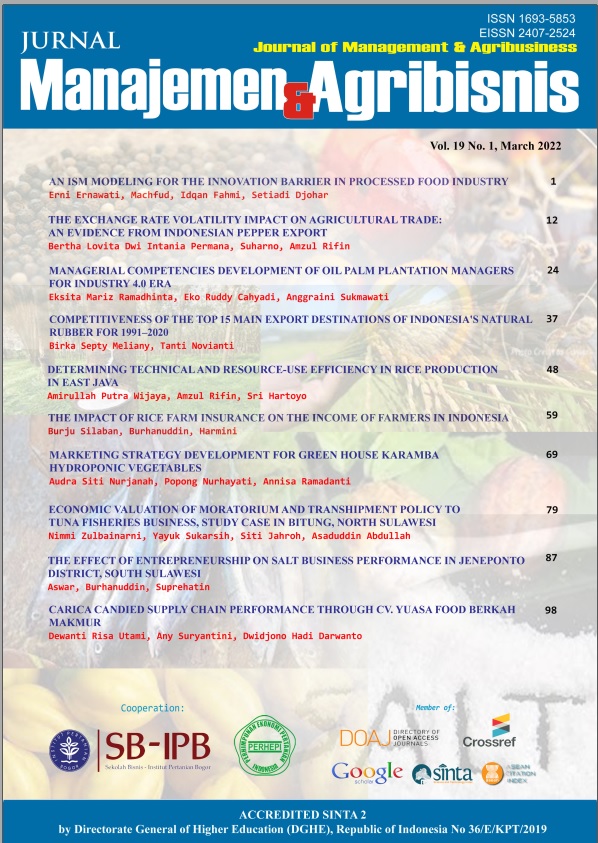The Exchange Rate Volatility Impact on Agricultural Trade: An Evidence From Indonesian Pepper Export
Abstract
Pepper (Piper nigrum) is one of the most exported spices in Indonesia followed by cinnamon, cloves, and vanilla. Due to its strong dependency on international trade, Indonesian pepper exports are suspected to be prone to exchange rate volatility risks. Traditionally, exchange rate volatility is perceived to discourage exports. However, studies to date remain to provide an open question on whether volatile exchange rates discourage exports. This paper aims to examine the impact of exchange rate volatility on Indonesian pepper exports to its main trading partners from 2005 to 2019. Using gravity model and GARCH (1,1) for volatility measurement, the results reveal that Indonesian pepper exports are not affected significantly by exchange rate volatility. This is because Indonesia has been in the position as a net exporter of pepper where a majority of its production is consumed abroad and pepper only costs a small percentage of the total cost of food productions.
Keywords: exchange rate volatility, GARCH (1,1), gravity model, Indonesian pepper trade, Indonesian spice
Authors
Authors who publish with this journal agree to the following terms:
- Authors retain copyright and grant the journal right of first publication with the work simultaneously licensed under a Creative Commons Attribution License that allows others to share the work with an acknowledgement of the work's authorship and initial publication in this journal.
- Authors are able to enter into separate, additional contractual arrangements for the non-exclusive distribution of the journal's published version of the work (e.g., post it to an institutional repository or publish it in a book), with an acknowledgement of its initial publication in this journal.
- Authors are permitted and encouraged to post their work online (e.g., in institutional repositories or on their website) prior to and during the submission process, as it can lead to productive exchanges, as well as earlier and greater citation of published work (See The Effect of Open Access).

